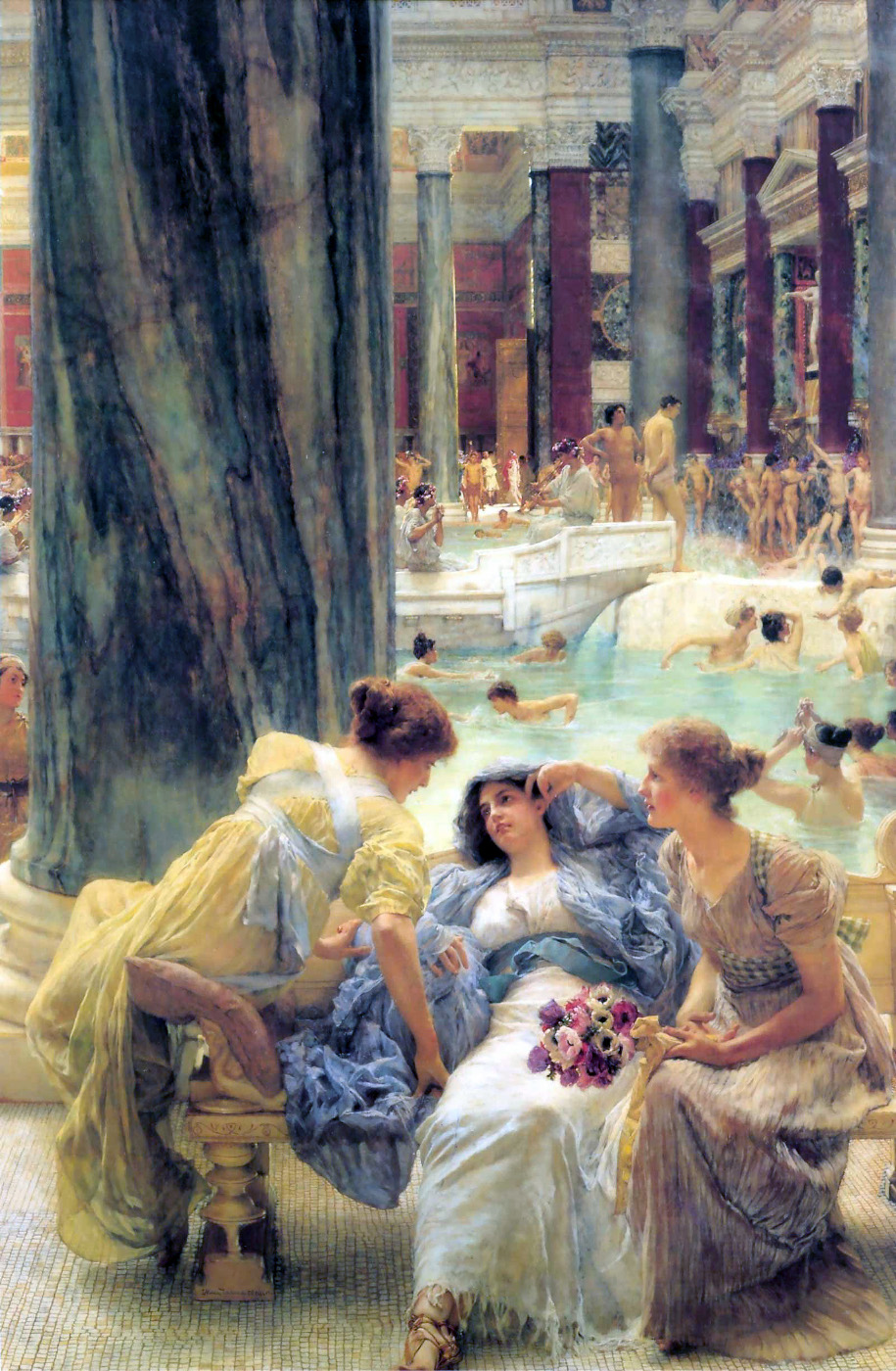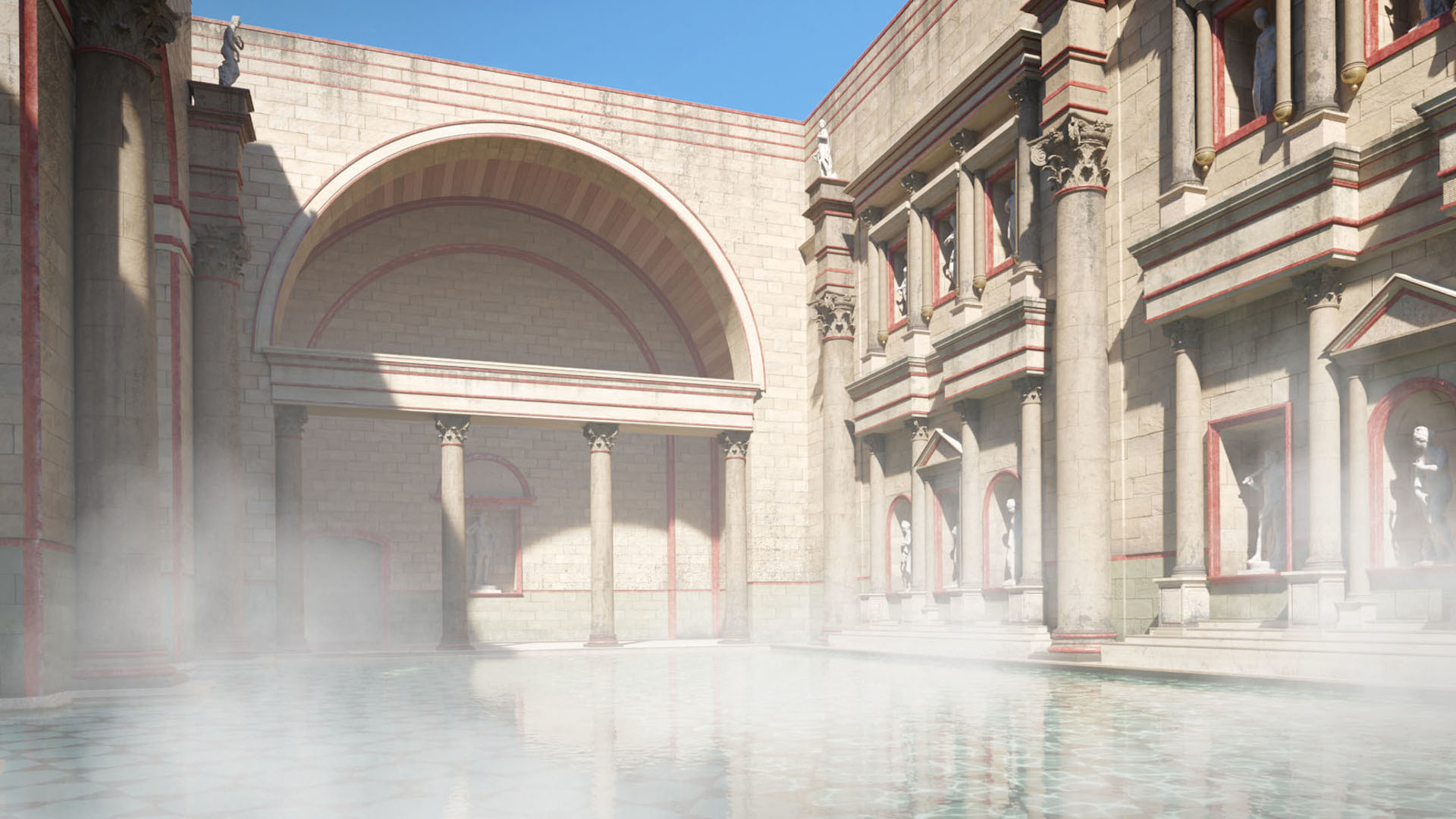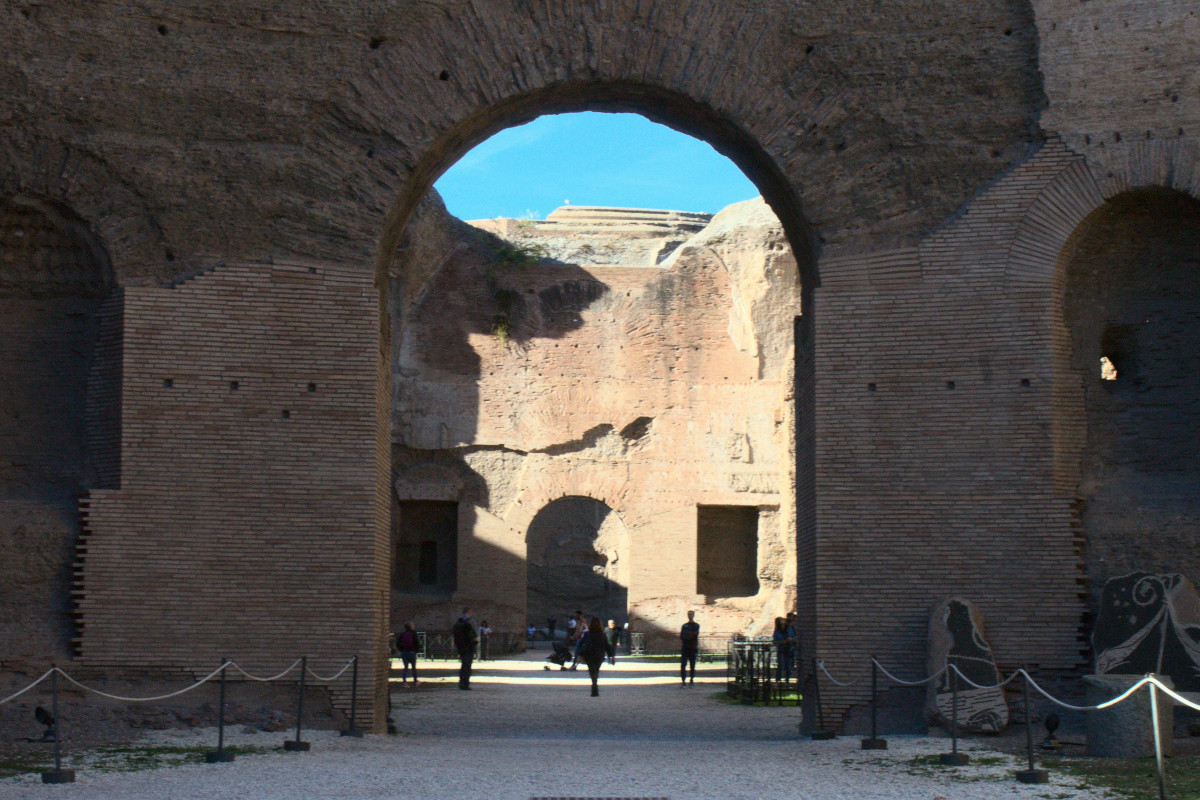
One of the 124 letters that the Roman philosopher and politician Lucius Annaeus Seneca wrote to his friend Lucilius began with a complaint about the noise that he had to put up with in his home, for the simple reason that he lived near some baths. Through his windows, he could hear people jumping into pools, sports players yelling, the shouts of vendors and even the cries of the hair removers (which, Seneca wrote, were only drowned out by the howling of their customers).
This letter, written in the first century A.D., confirms, as many other historical sources indicate, that the thermal baths were one of the most frequented buildings in ancient Rome. They were not just a place to bathe, do sport and take care of one’s health, but also a place to study, rest and socialize. And this was reflected in their architecture.
The largest and most luxurious complexes, such as the Caracalla thermal baths, were built to impress. They contained many buildings on several floors covered with marble and works of art, with complex systems to fill pools and keep the water at the right temperature. It is estimated that the Caracalla thermal baths complex could accommodate nearly 2,000 people, and its timetables reflected the pace of life in ancient Rome for centuries.
Bathrooms, gyms and gardens
For the Romans, bathing was one of the key moments of the day. A census carried out in the fourth century A.D. recorded a total of 856 public bathrooms (to which we must add all those built in the private homes of wealthy families). The Caracalla thermal baths are one of the finest illustrations of the Romans’ love of bathing.
They were built over a period of five years and opened in 216 by the emperor Caracalla. They were intended to be used by the people, so they were open to all, and the cost of admission was low (records of the time indicate it was similar to the price of a glass of wine or a loaf of bread).
Upon entry, people were able to access pools, thermal baths, massage rooms, saunas, gyms and sports areas. There were also hair removal rooms, sick bays, perfumeries, hairdressers, gardens, food shops and libraries.
Various written documents, some more positive than Seneca’s long complaint to Lucilius, describe a place full of activity, where performers including jugglers, musicians and poets gathered to entertain those who bathed, did sport or simply discussed aspects of day-to-day life in the city.

Nineteenth century painting of the Caracalla thermal baths. Wikimedia Commons.
The architecture of the Caracalla thermal baths
The Caracalla thermal baths, whose enclosure and remains can still be seen today, are a fine example of the functional focus of Roman architecture. The complex, covering around 11 hectares, had a symmetrical floor plan and a central passage with rooms leading off on either side.
The layout made it easy for visitors to pass through the three most important rooms in any Roman thermal baths: the frigidarium, the tepidarium and the caldarium (rooms with cold, warm and hot water). They could then access other areas that completed their bathing experience, such as indoor and outdoor pools and saunas.

Reconstruction of the Caracalla thermal baths in Rome. QS Supplies.
To supply this facility in the center of Rome, major engineering works were needed. Water was brought from springs outside the city along the Aqua Antoniniana and Aqua Marcia aqueducts and fed into a huge tank. This was connected to a system of pipes and tunnels that ran through the complex, filling and draining the swimming pools.
The water for the tepidarium and the caldarium was heated in large furnaces. To take heat to different rooms, the thermal baths had a hypocaust, a succession of tunnels and underground chambers through which hot air circulated. Behind these systems there was also human labor: the Romans used slaves to keep the supply and drainage systems running and stoke the fires in the furnaces.
A window on the past
The Caracalla thermal baths were, together with the Diocletian baths, the most complex and luxurious in Rome. Written testimonies describe huge columns and marble flooring, large vaults and domes, stunning mosaics, imposing statues and elaborate decoration. The remains that can still be found in Rome help us imagine the past splendor of its buildings.

Ruins of the Caracalla thermal baths. Giulio Gabrieli (Unsplash).
The Caracalla thermal baths closed in 537, but the layout of the buildings is still preserved, together with many of the walls, fragments of mosaic and various objects. Some marble baths were transferred to the city center to be converted into fountains. Today, the remains of the Caracalla Thermal Baths are one of the best-preserved examples of the thermal baths that, centuries ago, set the pace of life and determined people’s lifestyle in ancient Rome.





There are no comments yet